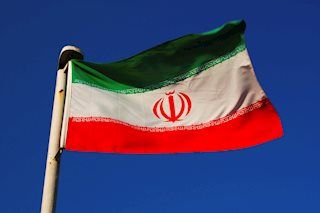Middle East tensions escalate over the weekend after Iran attacks Israel
|
The geopolitical tensions between Israel and Iran intensified over the weekend, as Iran launched drones toward Israel late Saturday, the Israeli military announced.
Citing the Islamic Revolutionary Guard Corps, Iran’s state-run media reported that dozens of drones had been fired in retaliation to the suspected Israeli attack on Iran’s consulate in Damascus on 1 April.
Iran successfully targeted Israel's most important military base in Negev using Kheibar missile, Iranian government’s newspaper reported.
Iranian Foreign Ministry, said in a statement, “Iran, if necessary, will not hesitate to take further defensive measures to safeguard its legitimate interests against any military aggressions and unlawful use of force.”
Israel’s military spokesman said the launches numbered more than 300 but 99% of them were intercepted.
“Iran fired 170 drones, more than 30 cruise missiles and more than 120 ballistic missiles. Of those, several ballistic missiles reached Israeli territory, causing minor damage to an air base,” he added.
Iran backed Yemen's Huthi rebels and Lebanon's Hezbollah joined the attack. Meanwhile, the UK Ministry of Defence confirmed late Saturday that British Royal Air Force jets in the Middle East “will intercept any airborne attacks within range of our existing missions, as required.”
In a nationwide address, Israeli Prime Minister Benjamin Netanyahu said, "in recent years, and especially in recent weeks, Israel has been preparing for a direct attack by Iran. Our defensive systems are deployed; we are ready for any defensive and offensive scenario. The State of Israel is strong. The IDF is strong. The public is strong."
However, Israeli President Isaac Herzog told CNN's Wolf Blitzer on Sunday, “Israel is not seeking war after Iran's attack and "balance is needed in this situation."
US President Joe Biden said on X that “I just met with my national security team for an update on Iran’s attacks against Israel. Our commitment to Israel’s security against threats from Iran and its proxies is ironclad.”
UN Secretary-General Antonio Guterres condemned Iran’s drone attacks targeting Israel as a “serious escalation” and called on all sides to show restraint to avoid a devastating regional conflagration.
The UN Security Council held an emergency meeting on April 14 over Iran’s unprecedented drone and missile attack on Israel. Further, the UK, France, and Egypt condemned Iran's actions, while Saudi Arabia called for restraint.
Market reaction
In the opening trades on Monday, traders seem to look through the anticipated escalation in the Middle East, as a threat of an imminent Iranian attack on Israel loomed in the past week.
FX majors are seeing a limited reaction to the widening Middle East geopolitical tensions while the S&P 500 futures, a key risk barometer, post moderate gains in early Asia.
However, Gold price attracts fresh haven demand, rising near 0.50% to nearly $2,370.
Risk sentiment FAQs
In the world of financial jargon the two widely used terms “risk-on” and “risk off'' refer to the level of risk that investors are willing to stomach during the period referenced. In a “risk-on” market, investors are optimistic about the future and more willing to buy risky assets. In a “risk-off” market investors start to ‘play it safe’ because they are worried about the future, and therefore buy less risky assets that are more certain of bringing a return, even if it is relatively modest.
Typically, during periods of “risk-on”, stock markets will rise, most commodities – except Gold – will also gain in value, since they benefit from a positive growth outlook. The currencies of nations that are heavy commodity exporters strengthen because of increased demand, and Cryptocurrencies rise. In a “risk-off” market, Bonds go up – especially major government Bonds – Gold shines, and safe-haven currencies such as the Japanese Yen, Swiss Franc and US Dollar all benefit.
The Australian Dollar (AUD), the Canadian Dollar (CAD), the New Zealand Dollar (NZD) and minor FX like the Ruble (RUB) and the South African Rand (ZAR), all tend to rise in markets that are “risk-on”. This is because the economies of these currencies are heavily reliant on commodity exports for growth, and commodities tend to rise in price during risk-on periods. This is because investors foresee greater demand for raw materials in the future due to heightened economic activity.
The major currencies that tend to rise during periods of “risk-off” are the US Dollar (USD), the Japanese Yen (JPY) and the Swiss Franc (CHF). The US Dollar, because it is the world’s reserve currency, and because in times of crisis investors buy US government debt, which is seen as safe because the largest economy in the world is unlikely to default. The Yen, from increased demand for Japanese government bonds, because a high proportion are held by domestic investors who are unlikely to dump them – even in a crisis. The Swiss Franc, because strict Swiss banking laws offer investors enhanced capital protection.
Information on these pages contains forward-looking statements that involve risks and uncertainties. Markets and instruments profiled on this page are for informational purposes only and should not in any way come across as a recommendation to buy or sell in these assets. You should do your own thorough research before making any investment decisions. FXStreet does not in any way guarantee that this information is free from mistakes, errors, or material misstatements. It also does not guarantee that this information is of a timely nature. Investing in Open Markets involves a great deal of risk, including the loss of all or a portion of your investment, as well as emotional distress. All risks, losses and costs associated with investing, including total loss of principal, are your responsibility. The views and opinions expressed in this article are those of the authors and do not necessarily reflect the official policy or position of FXStreet nor its advertisers.